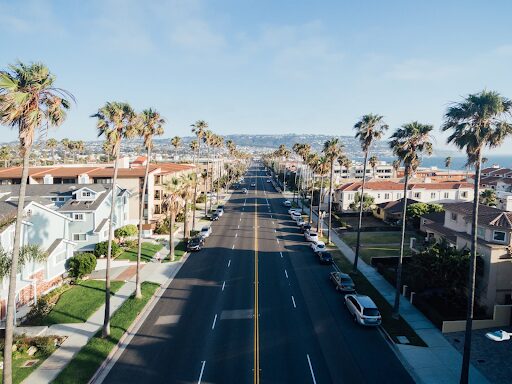Wildfires and heat waves now shape California’s building agenda. Between 2018 and 2024, more than 56,000 single-family homes were damaged or destroyed statewide, and 19 of the 20 largest fires on record occurred in the last decade. The response is clear: owners who rebuild—or buy lots in high-risk zones—are designing in ignition-resistant details and robust thermal protection from day one. Below: what’s driving the shift, how to specify the right assemblies, what it costs, and where policy is nudging the market.
1. Why “Home Hardening” Is Now Standard
Wildfire exposure is expanding. The official Wildland–Urban Interface (WUI) map now covers roughly one in four California parcels, triggering Building Code Chapter 7A requirements for exterior materials (Class A roofs, ember-resistant vents, non-combustible decks).
Insurance pressure is real. Since 2023, more than a dozen carriers have paused new policies in high-risk ZIP codes. Those still writing coverage often require proof of completed defensible space and rated assemblies before issuing or renewing a policy.
The price premium is modest. State task-force research shows that upgrading a new dwelling from baseline code to “optimum” wildfire resistance adds about $18,200 in Northern California and $27,100 in Southern California—roughly 3–6% on a $600k shell.
2. Integrating Fire-Smart Assemblies and Summer Insulation
Roof & eaves
- Specify Class A coverings (standing-seam metal, concrete or clay tile).
- Extend metal drip edge and use metal gutters to block ember intrusion.
Walls & windows
- Favor exterior plaster (stucco) or fiber-cement siding with a 1-hour rating.
- Use dual-pane tempered glazing to resist heat fracture; it also helps meet Title 24 U-factor targets (0.27–0.30 in most climate zones).
Vents & under-decks
- Install 1/8-inch mesh ember-shield vents approved by CAL FIRE.
- Box in deck framing or protect it with non-combustible soffit panels.
Attic & wall insulation
- California’s 2025 Energy Code pushes R-38 in vented attics statewide and caps wall U-factor at 0.048 (roughly R-21 cavity plus R-5 ci). Paired with continuous exterior insulation, that package slashes cooling loads during longer, hotter shoulder seasons.
3. Working With a Local Architect
Hiring a California-licensed architect typically runs 8–15% of construction cost; custom wildfire detailing and hillside sites trend toward the upper end. On a $750k rebuild, design services often land between $60k and $110k. Expect the fee to cover:
- Site-specific code review (WUI overlays, slope setbacks, Title 24 compliance modeling).
- Permit-ready drawings with Chapter 7A annotations and energy calculations.
- Bid-phase support as contractors price specialty assemblies such as ember-resistant vents.
Many studios now iterate early concepts in floor plan software that pairs 2-D sketching with live 3-D context, producing client-ready visuals in minutes rather than the week-long CAD-to-render pipeline of the past.
4. What It Really Costs to Build Fire-Ready in 2025
| Project type | Typical cost range* | Key cost drivers |
| Rebuild in coastal Los Angeles | $350–$900 / sq ft | Strict hillside grading rules, premium labor, finish level |
| Rebuild in inland counties (e.g., Riverside) | $200–$400 / sq ft | Lower land costs, milder seismic upgrades |
| Wildfire-resistance premium | +$18k–$27k / home | Class A roof, non-combustible siding, ember vents |
*Shell and finishes only; excludes land, design fees, and impact fees.
5. Codes, Permits, and Incentives to Know
| Policy / program | What it requires or offers | Effective date |
| CBC Chapter 7A | Rated exterior walls, Class A roof, 1/8-inch ember vents in WUI zones | Statewide since 2008; updated 2023 |
| Title 24 — 2025 Energy Code | R-38 attic, U-0.27 windows, battery-storage-ready panel | Permits filed on/after Jan 1, 2026 |
| California Wildfire Mitigation Program | Free home assessment + grants for hardening/defensible space, prioritizing low-income homeowners | Rolling enrollment; 2025 budget $135M |
| ReCoverCA Retrofit Grants | Up to $50k for owners in nine wildfire-declared counties | 2025 funding cycle open now |
| Federal Energy-Efficiency Credits (IRA) | 30% tax credit, up to $2k for heat pumps; $1.2k for insulation & windows | Through Dec 31, 2025 |
| Los Angeles Net-Zero New-Building Target | All new buildings carbon-neutral by 2030; city departments already mandate all-electric specs | Under L.A. Green New Deal |
Local plan-check fees average 1.5–2% of construction value, with WUI reviews adding $1,200–$3,000 in many counties. Submit defensible-space plans and any AB-38 disclosure (for homes sold in Very High Fire Hazard Severity Zones) with your permit set to avoid redlines.
6. What’s Next for California Construction
Electrification goes mainstream. Beginning January 2026, most new low-rise homes will be all-electric under SB 1020 and aligned city ordinances. Early adoption of heat-pump HVAC and induction cooking future-proofs projects and pairs neatly with Title 24’s PV-plus-battery readiness.
Materials are shifting. Builders in Los Angeles and Ventura report surging demand for fire-rated fiber-cement siding and metal roofing—adding roughly $3–$6/sq ft but offering 50-year service life with minimal maintenance. Lead times are easing as in-state production ramps up.
Design cycles keep shrinking. Cloud-based modeling now produces client-facing 3-D renders in under five minutes, letting architects walk planning boards through realistic massing studies at the first hearing. For owners, that speed turns insurance payouts into permits—and permits into starts—before the next fire season.
Financing rewards resilience. Major lenders already discount rates by up to 25 bps for homes that earn a FORTIFIED-Wildfire certificate or meet Cal OES hardening standards. Expect those incentives to widen as insurers and investors price climate risk into cap rates.
7. Action Steps for Prospective Rebuilders
- Pull the WUI map for your parcel and note any Very High Hazard overlays.
- Line-item fire-resistant upgrades early—plan on ~$20k for a typical custom home.
- Engage an architect fluent in Chapter 7A and Title 24 modeling; confirm fee structure up front.
- Pre-qualify for grants like ReCoverCA before breaking ground; some require work plans at application.
- Document assemblies (Class A roof, vent specs, siding ratings) to streamline insurance underwriting at occupancy.
Conclusion
California’s rebuilding boom isn’t just about replacing square footage lost to wildfire; it’s about delivering homes that can stand up to the twin realities of fire and extreme heat. By combining ignition-resistant assemblies, high-performance insulation, and forward-looking energy codes, today’s owners can lock in lower risk, reduced operating costs, and stronger resale value. The tools and incentives are in place; the remaining step is decisive action before the next Santa Ana wind begins to blow.

